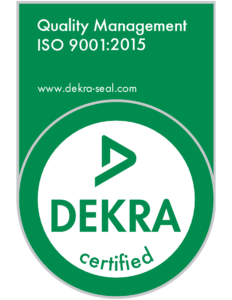Article Category: Ultrasonic Tooling
- Home
- Knowledge Base
- Ultrasonic Welding
- Ultrasonic Tooling
Ultrasonic Tooling
What makes up the probe configuration in ultrasonic welding?
The probe configuration in ultrasonic welding typically consists of a converter, a booster, and a horn. The converter is a...
What type of horn is good for long-term or high wear for ultrasonic welding production environments?
A titanium horn is a good option for long-term or high-wear production environments in ultrasonic welding. Titanium is known for...
What are the factors that influence horn design in ultrasonic welding?
The factors that influence horn design in ultrasonic welding are:
What are the primary functions of the horn in ultrasonic welding?
The horn in ultrasonic welding has several primary functions, including: The shape, size, and material of the horn are critical...
What is a transducer used for in ultrasonic welding?
A transducer is a key component in ultrasonic welding systems that is used to convert electrical energy into mechanical vibrations....
How is the horn tuned in ultrasonic welding?
The horn in ultrasonic welding is tuned by adjusting its length and cross-sectional area to match the resonance frequency of...
What a horn shapes and styles are there to choose from in ultrasonic welding?
There are various horn shapes and styles that are used in ultrasonic welding depending on the specific application requirements. Here...
What is a Nodal Point in ultrasonic welding?
In ultrasonic welding, a nodal point is a point on the ultrasonic horn or booster where there is minimal or...
What is the primary function of a booster in ultrasonic welding?
The primary function of a booster in ultrasonic welding is to amplify the low amplitude, high-frequency vibrations produced by the...
Why use a mylar washer in ultrasonic welding?
A Mylar washer is a type of insulating washer used in ultrasonic welding to electrically insulate the horn from the...
What is a booster in ultrasonic welding?
A booster is an acoustic tool used in ultrasonic welding that amplifies and transmits vibrations from the ultrasonic transducer to...
What wattage is available in ultrasonic welding?
The wattage available in ultrasonic welding can vary depending on the specific application and equipment being used. Generally, ultrasonic welding...
What are the different types of horns in ultrasonic welding?
In ultrasonic welding, a horn (also called a sonotrode) is used to apply high-frequency vibrations to the parts being welded....
What are the benefits of resilient fixtures in ultrasonic welding?
The benefit of resilient fixtures for ultrasonic welding are that they reduce part marking on soft materials.
What are the benefits of a rigid fixture in ultrasonic welding?
Rigid fixtures also allow for more accomodating part holding. With rigid ultrasonic fixtures it is easier to adjust where and how a part is contacted.
Knowledge Base Categories
- Ultrasonic Welding
- Ultrasonic Transducer
- Ultrasonic Transducer
- Ultrasonic Tooling
- Ultrasonic Techniques
- Ultrasonic Staking
- Ultrasonic Process Optimization
- Ultrasonic Process Control
- Ultrasonic Joint Design
- Ultrasonic Horns
- Ultrasonic Boosters
- Spin Welding
- Materials and Design
- Material Selection
- Maintenance
- Infrared Welding
- Heat Staking
- Gluing and Solvent Bonding
- Assembly Methods
Contact Info
- Monday - Friday
8:00 AM - 4:00 PM ET - 321-622-8584
- 3153 Skyway Circle, Melbourne, FL 32934
- info@trineticsgroup.com
Registrations
UEI ID: Z6T3GLT5YFZ9
CAGE Code: 8B6Y5
DUNS #: 105213696
NAICS Codes: 339999
ISO 9001:2015 Certified

© 2025 Trinetics Group. All Rights Reserved
